Seeking a Modern Foundation for the Digital Workplace
September 12, 2016 3 Comments
Take a few minutes and try to imagine the workplace of the near future. What does it look like? Some of the likely items to consider are these:
- Are mobile, cloud-based productivity and collaboration apps the center of the next-generation digital workplace?
- Will we all switch over from e-mail to Slack-like lightweight messaging services supported by contextual apps and intelligent chatbots?
- Will the workplace of the future be contained almost entirely inside virtual reality experiences that provide ultra-realistic online workplaces, complete with engaging avatars of our co-workers and AI-based assistants?
- Will social networks and online communities become the leading way that we manage our organizations and conduct our work?
- Will we soon control everything with our voices, gestures, and even our thoughts?
Almost certainly the answer is yes to all of these questions, and many similar ones. It’s just a matter of when. The reason it’s important to ask them, however, is that we learn very much about what we should do today by looking at where we will be tomorrow with digital work.
What’s the Organizing Principle of Digital Work?
As part of asking these questions, recently I’ve been trying to seek the answer to what the organizing principle of the digital workplace should be. The top models have shifted many times over the years, and we even had a sort of crisis in the early 2010s when we had so many competing choices, rapidly shifting technologies, and important discoveries of new digital workplace skills like mass collaboration, crowdsourcing, and Working Out Loud, to name a few. Uncertainly reined and the path forward was unclear for many. It didn’t help that far too many of us still thought about the digital workplace in primarily tech terms, instead of emphasizing that it is only by enabling people with new workplace concepts, skills, tools and techniques that we can become successful in working in new ways.
In fact, as a primary symptom of this issue, I still find that most IT departments use pure technology adoption as the primary measure of success, rather than the business metrics or KPI improvements that actually matter. With a tech-first mindset, it’s as if merely using a digital tool is somehow equivalent to effectiveness or creating measurable value. An important subject for another time, however.
It’s clear to me, after being in the space for two decades, is that we generally have poor ability to balance the tech and the people in our digital workplace strategies. Admittedly, it’s a tough balancing act: If we focus too much outside the technology, we lose the insight required to see how emerging new types of digital tools directly guide us towards powerful new models of working (such as “Let the Network Do the Work“.) If we focus too much on the technology, we lose the insight required to see best how to bring the people in the workforce along with us.
However, if we can identify the right organizing principle — which gives us an effective way to think and reason about the digital workplace that provides the right mental guardrails to ensure we keep a good balance — then we are more likely to succeed. However, it’s evident that we’ve not yet hit upon the right mental framework that allows the average organization to reach the next level of the digital workplace, and its attendant benefits.
Social Business Was A Breakthrough, But Not Complete
To be sure, we’re getting closer. The idea of social business as an umbrella set of ideas for the future of work is probably got as far as any concept has managed to get in the broader marketplace. As my co-author of Social Business By Design, Peter Kim, defined it, social business is about enabling people through the nearly unlimited possibilities given to us through relentless global innovation of the network technologies that have essentially remade the entire world in the last twenty-five years:
“A social business harnesses fundamental tendencies in human behavior via emerging technology to improve strategic and tactical outcomes.”
Thus any digital workplace that doesn’t tap into the innate tendencies of both people and digital networks will be at a disadvantage over time, often profoundly. We can already see this if we look at the performance data for workplace technologies like enterprise social networks — a key foundational technology of social business — that has been captured over the years by McKinsey and numerous others.
But as I’ve observed recently by contrasting it with the emerging model of digital experience management, social business is not a complete (nor was it intended to be) view of the digital world of work. It’s just a very important way of looking at better ways to conduct our work through collaboration and engagement. But it still doesn’t encompass all the ways that digital is transforming both the workplace and the people in it.
Yet for the foreseeable future, it is in fact technology that is largely leading the discussion when it comes to new ways of working, given that is has been more successful than anything else in raising productivity and producing growth in the last few decades. But as those that have spent their life studying it, as famed economist Robert Gordon noted recently, it often takes us a long time to figure out how to achieve the benefits. Certainly there are important non-tech big concept trends today (corporate social, sustainable business, and lean enterprise come mind) but even most of the key business trends today have tech involved in them in some way.
The digital age is one reason why The Economist last year noted the profound decline in recent years of notable management gurus, who had great expertise in business and could spot important work trends, but did not as a group have the requisite digital knowledge, context, and mindset to see past the inflection point when technology began to change virtually everything we do in our organizations.
Yet Tech Now Sets the Future Of Work Agenda
Thus the evolution of key digital workplace technologies, which I’ve depicted above, is almost depressingly devoid of the people equation, largely because the industry has mostly focused on specific point tools themselves. File, documents, records, and transactions are still at the core of most on-the-ground thinking about the digital workplace, though at least conversation, collaboration, and engagement are now about as important. Now team messaging along virtual and augmented reality are on the upswing but still in early days.
Things are changing again in general in the digital workplace for a variety of reasons. This include old legacy digital workplaces aging out and younger workers having higher expectations. But the digital workplace is shifting mostly because of fast-paced innovation, tech change, and acute proliferation. As a result, we’re now seeing a more nuanced and complex conception for the digital workplace emerging; a way of thinking about connecting the pieces into a multilayered and contextual digital habitat, as opposed to a mass jumble of largely disconnected apps.
We can also see that the digital workplace wilderness that we encountered during the collaboration and app proliferation of the early 2010s was just a gentle breeze of disruption. A large raft of disruptive technology is coming to the enterprise at this very moment, and it will change the workplace more in the next 10 years than in the last 50. While we see new digital management theories such as Holacracy emerging to try to create a better defined and detailed digital organizing model for us, the reality is that any approach is subject to the same forces that dethroned the traditional gurus of management: We just can’t see how work will shift until new tech is actually upon us, forcing us to revise and rethink much of what we know in a reactive mode, rather than with forethought and strategic planning.
For this reason and others, I now believe any effective organizing principle for the digital workplace must be profoundly designed for loss of control and take into account highly emergent behavior and outcomes. I believe we’re seeing the model for information technology (IT) finally shifting in realization of this, though it will take time.
You’re Invited to Two Open Events on the New Digital Workplace
So what then should be the foundational model for work today? To help discuss this question I will be participating in two industry online events this week in which we’ll explore these topics to the fullest possible. I would like to invite you to join me in the discussion.
The first is a Town Hall Debate this Wednesday, September 14th, 2016 at 9am PT/noon ET — which I’ve humorously likened more to a cage match — with my friend, industry colleague, and content management uber guru Tony Byrne, of the Real Story Group. We’ll be grappling with all of the above and more in a live video broadcast and I hope you’ll join us and ask hard questions.
You can register for the Town Hall Debate on Enterprise Social Collaboration here.
The second event is a Webcast of my latest research with Jive Software’s Gili Guri-Mill where I’ll explore why the enterprise social network is emerging at the leading candidate for the foundation of the digital workplace. This will be broadcast on September 15th, 2016 at 10am PT/1pm ET, and I’ll be taking questions towards the end.
Please register for my the Webcast, titled Enterprise Social Networks: The Foundation of the Digital Workplace here.
Additional Reading
Digital Business Ecologies: How Social Networks and Communities Are Upending Our Organizations
















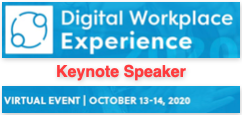


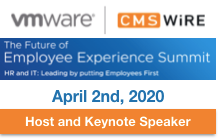






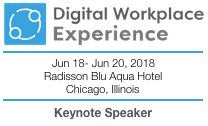




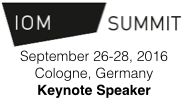
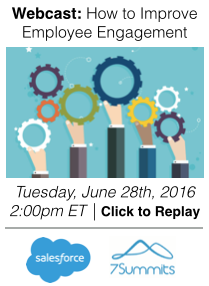


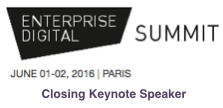













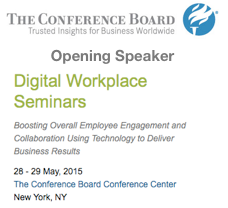




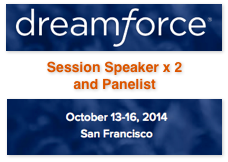





completely agree. I have a similar message in my conferences. May I use the graphic and some of your comments?
For me the key is the person, not the technology. Focus on the person needs, and solve them.
Thanks and yes, of course. My visuals usually have a Creative Commons license and you can use them with attribution.
Pingback: Surfing the Office 365 Waves: An Office 365 Roadmap Analysis with Power BI